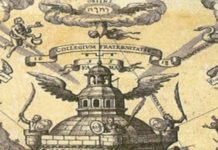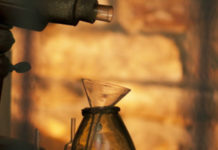Historically, knights have been associated with the royal and the noble. A great act of chivalry is what is always talked about when it comes to knighthood. Knights in Europe were considered as mounted warriors. Linked with British honor, the title of knight was considered as purely honorific and usually bestowed by the Monarch. A group of French knights who were supposed to be wealthy and powerful formed a military order what is famously known as the Knights Templar.
A group of nine French knights founded an order in Jerusalem in 1118 under the title ‘The Poor Fellow-Soldiers of Christ’. The warriors all took monastic views and pledged their lives to protecting Christian travellers and the Holy Land. They were housed at the palace of King Baldwin II, the French King of Jerusalem, on the site of Solomon’s Temple which is how they gained their title ‘Knights Templar’.
The knights gained a fearsome reputation for being ferocious in battle, courageous and honourable.
In 1128, they were officially sanctioned by Pope Honorius II, and they were provided with a ‘Rule’ from Saint Bernard of Clairvaux. The knights gained a fearsome reputation for being ferocious in battle, courageous and honourable. They fought in the Crusades alongside Richard the Lionheart and quickly accumulated vast amounts of treasure, wealth and land from grateful European monarchs.

Within 200 years the Templars had left the Holy Land and taken residence in Paris, but such was their influence that they were only required to answer to the Pope. Their riches were so immense that they began the earliest form of organised banking, and became known as moneylenders to European monarchies.
But this, combined with a history of holding meetings in secret, led to their downfall. King Philip the Fair of France was known to be hugely indebted with staggering sums owed to the order. On 13th October 1307, he declared that the Templars engaged in heretical activities at their meetings arrested all members of the order in France, and seized their assets.
On 19th March 1314, the last Grand Master of the Knights Templar .. was burned at the stake..
The Templars accepted his decisions quietly, but many were then tortured into giving false confessions of unholy practices. However, only the Pope could condemn the order, and a newly installed Pope Clement V was happy to bow to Philip’s coercions. The order was disbanded, and it was suggested that all European monarchies take steps to suppress the movement.
On 19th March 1314, the last Grand Master of the Knights Templar, Jacques de Molay, was burned at the stake on an island in the middle of the River Seine in Paris. As the flames rose, it is claimed de Molay cursed King Philip and Pope threatening that they would both follow him within a year. They both did – Clement died a month later and Philip seven months after that.
However, the Knights Templar themselves are said to have continued in secret, and before his death, de Molay had passed on his powers to a successor. Some of the Templars are believed to have taken refuge in Scotland during the intervening years, but the movement did not reveal itself again until 1705.
Since then the order has had associations with Freemasonry and other secret societies, but the movement has flourished and they have had many high profile and influential members. In more recent years, following the Second World War, the cohesion of the entire international order has become somewhat fractured. The meetings are still held in secret.
So what was this treasure?
Apart from fiercely guarded rituals and traditions, it would seem that there are few mysteries surrounding the order. But one question remains – why did the Parisian Templars not fight when arrested by Philip’s men? In the days leading to their capture, a heavily-laden cart was supposedly removed from their buildings. Philip never found all the riches in their offices that he wished to acquire, and it seems the knights submitted to his thuggery meekly, in order to let their great treasure escape.
So what was this treasure? The obvious theory is that it was gold and jewels taken from holy temples of Jerusalem and the biblical world during the Crusades. However, many have speculated that the reaction of the Templars suggested that it was something beyond material value, and may have been something of enormous spiritual importance, such as the Ark of the Covenant or the Holy Grail.
Others have considered that it may be secret Christian knowledge, such as the ‘bloodline of Jesus Christ’. The treasure, whatever nature it takes, has never been found, and where it is hidden remains a mystery. Many Templar experts have considered it may have been the root of Bérenger Saunière’s mysterious wealth, and believe it was buried at the church of Rennes-le-Château.
However, one of the most widely-held theories is that the surviving Templars hid it at Rosslyn Chapel in Scotland. If the order did manage to continue throughout its banished years, there is good reason to believe the secrets of the treasure are known to only a select few. To the rest of us, the Knights Templar are only modern day descendants of a historical mystery.
-end-





































This is mainly true, but not entirely. The templars didn’t just leave the holy land, they were defeated by Saladin, who was much better accustomed to the territory and it’s various challenges (like the heat). The Templars couldn’t retake the land and since they no longer ‘guarded the holy land’, their use became questionable as this was the basis of their existence. This is why King Phillip axed the order. It was a political decision with all the force used that was normal in that day and age.
As a Masonic Knight Templar, I find the study of the early crusades rather interesting and after reading a book titled “Born In Blood”, I believe that the author has a great point it is highly possible that the templars did in-fact survive but, In order to do so, They needed to associate themselves with highly educated and sought after men.
In the ancient times, These men were known as “Stonemasons” which later on in the 17th century became freemasonry. Masonic document’s show that the masonic order has been around since time immemorial. It would be no surprise at all that a militaristic order of knight’s could have suffered such a serious blow and regrouped as they did in the crusades. The only reason the templars were tried for treason is a simple matter of European and Catholic Church corruption in the early to mid 13th century. The Knight’s Of The Temple of King Solomon were essentially bankers who had funded many european wars for the current powers of europe at the time.
This is a simple matter of one government’s greed to not want to pay back the debt that they had owed the Knight’s. Many of the confessions from the templars were false and they were tortured into saying pretty much anything the greedy and threatened Catholic Church told them to say.
sick art work
The flag should have the white at the top and the black at the bottom.
Because the black symbolises the Dark Side and the White symbolises
the Light of Jesus and Christianity. In proper and true Christian
symbolism there is therefore no possibility for the black to triumph
over the white, even symbolically by being placed above it on a flag,
badge or shield. Just remember, for example, the black of the evil flag
of ISIS. How can it be placed above the colour of our Lord?
Those who have inverted the original and true Templar design have
done so either out of sheer ignorance or out of some much darker motive.
Perhaps some saw a revived Templar organisation as something they could
profit from or manipulate, but coming from a fundamentally
anti-Christian background (perhaps Masonic, perhaps some other sect,
there is no way at present of knowing) did not want to see the true
Templar flag flying once more.